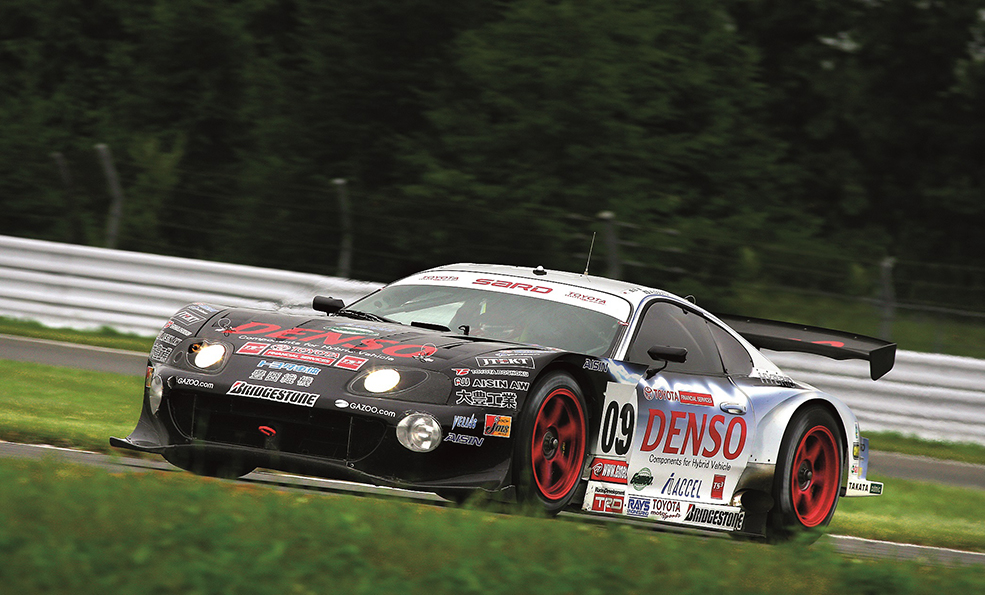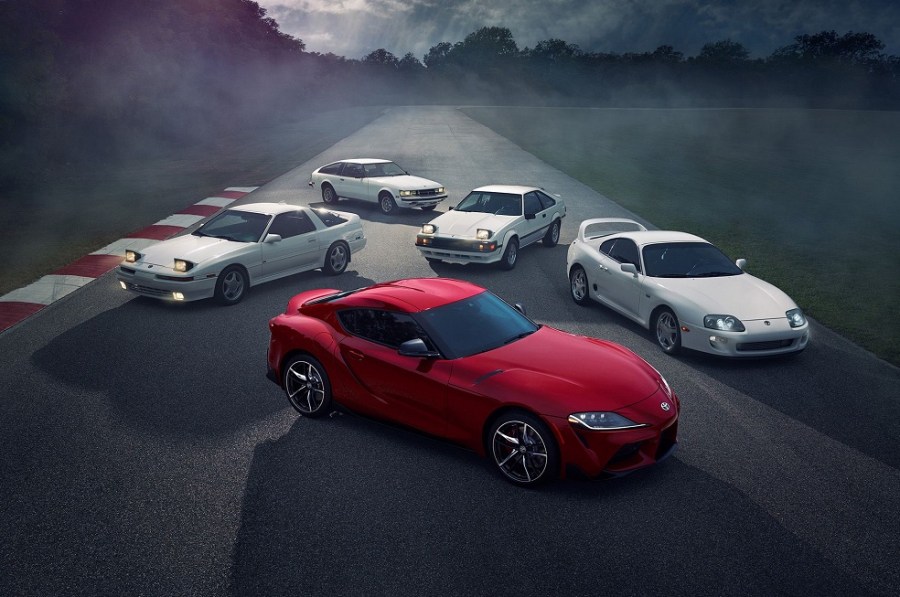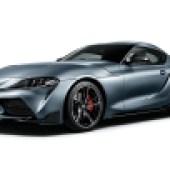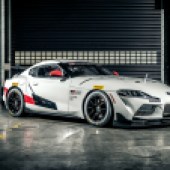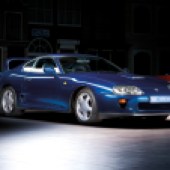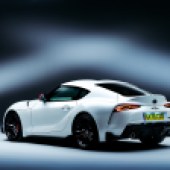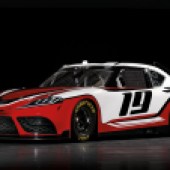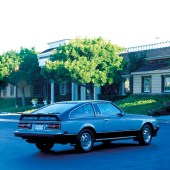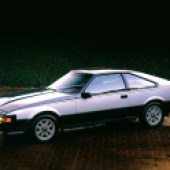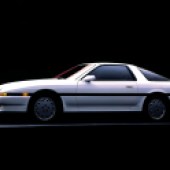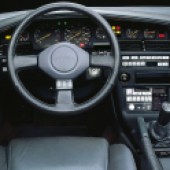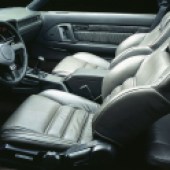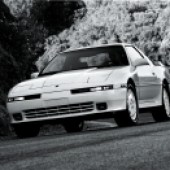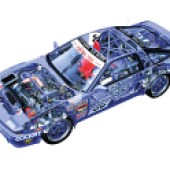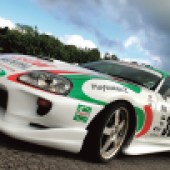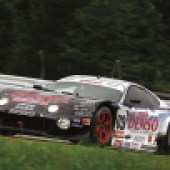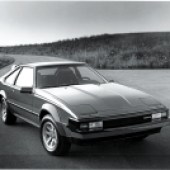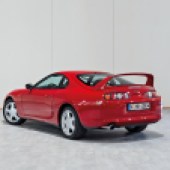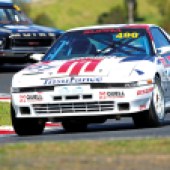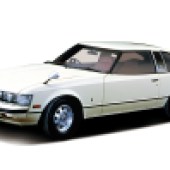Now distanced from its super-sized Celica origins, the Toyota Supra is a legend amongst Japanese car enthusiasts. Its ability to make mega-power alongside starring roles in console games and on TV and movie screens give Toyota’s coupé a legacy truly worthy of a super-hero!
Guide from Fast Car. Words: Richard Gooding.
Alongside the smaller Celica, the Toyota Supra spearheaded Toyota’s performance car ambitions from the late 1970s to the early 2000s. Reborn in 2019 and sharing components with the BMW Z4, the six-cylinder version of the fifth-generation car stays true to its 1970s recipe, even if a few ingredients have a German flavour. Almost five decades since it first arrived, the Toyota Supra is as super as it ever was.
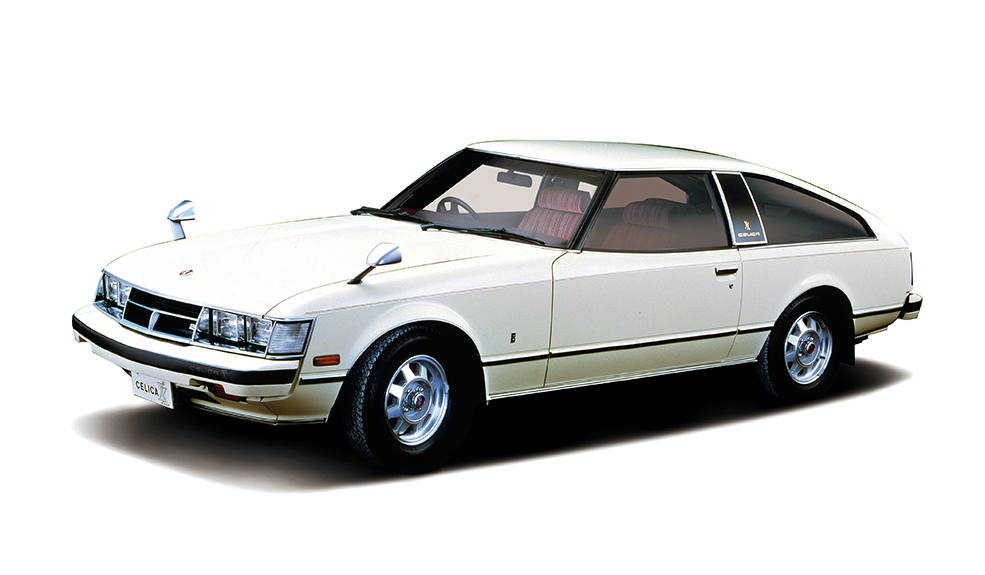
Toyota Supra A40: super-Celica
The first generation of the Toyota Supra was a larger and more powerful version of the smaller Celica. From the doors back, the two cars were very similar, the Supra’s front panels almost 13cm longer than the Celica’s to squeeze in Toyota’s inline 2.0-litre, six-cylinder engine. The beefy sports coupé was aimed squarely at Datsun’s popular Fairlady/Z-car series, packing 110bhp or 123bhp. Launched in 1978 as the Celica XX, the Supra name only arrived in 1979 when US buyers were given the chance to buy into Toyota’s sports car brand. Only available with the 2.6-litre 110bhp engine option, 0-60mph took a less-than-super 11.5 seconds, but the swept back fast-coupé looks gave visual oomph where any physical performance was left wanting. Weight was a trim 1,180kg.
Five-speed manual or four-speed automatic transmissions put power down to the rear wheels. JDM-spec 2.0-litre ‘MA45’ and ‘MA55’ cars looked identical to the 2.6-litre ‘MA46’ and later 2.8 ‘MA47’s, and with their high-end trappings and luxurious features, the Celica Supra enticed drivers who favoured extravagant trimmings. A four-speaker radio, luggage cover, rev counter, and a tiltable steering wheel were all highly desirable comforts in 1979, but electric windows, central locking, and cruise control remained on the options list.
In Japan, S, L, and G-spec cars offered buyers trim and engine pick and mix combinations, an optional limited slip differential featuring on US-export MA46 and MA47-spec cars, together with all-round disc brakes. At the 1979 US Grand Prix, a Celica XX performed pace car duties, although its engine had to have a turbocharger strapped on to it to post a respectable acceleration figure!
In 1980, cosmetic changes to US cars upped the big Toyota’s appeal, alloy wheels and a centre console digital clock leveraging more luxury. True opulence came in the shape of leather seats as well as climate control. Introduced for the 1981 model year cars, a new 2,759cc six-banger gave 116bhp and 145lb ft, with gearbox options as the 2.0 and 2.6-litre models. The combination of a revised final drive ratio in the automatic transmission and the new engine gave a quicker 0-60 time of 10.2 seconds, but if that wasn’t athletic enough, drivers could choose the Sports Performance Package, which saw the car festooned with front and rear spoilers, sitting on sports suspension, the Dunlop tyres bedecked with raised white letters.
Legendary engine – M-EU/4M-E/5M-E
Toyota’s M family of longitudinally mounted straight-six engines began life in the 1960s and were used until the 1990s. The 123bhp 1,998cc M-EU unit powered the A40 JDM Celica XX, US Celica Supras fitted with the 110bhp 2,563cc 4M-E six-pot, also offered in 138bhp guise. The 116bhp 2,759cc 5M-E unit arrived in 1980.
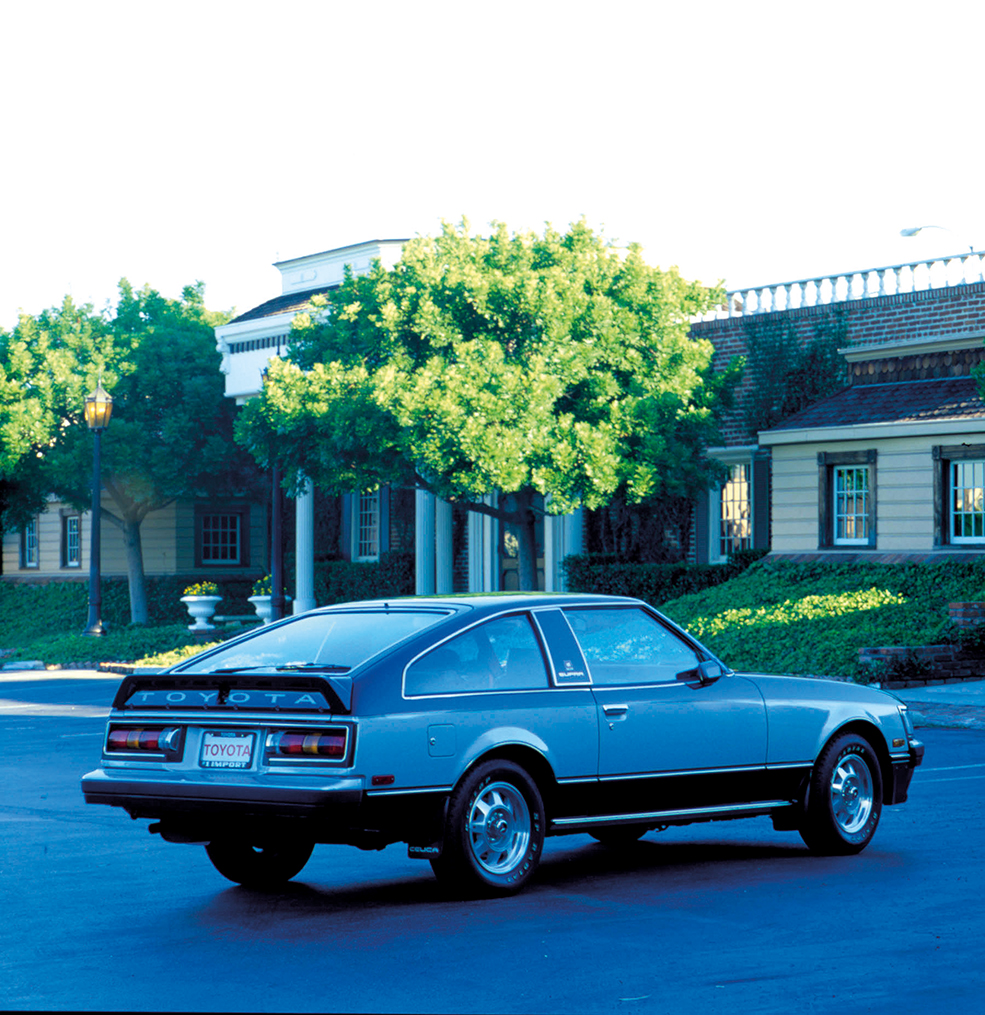
Toyota Supra A60: the follow-up
Debuting in July 1981, the second-generation Celica Supra marked the model’s debut in Europe. Arriving in August 1982, just 100 cars per month were allocated to the UK. Once again, the car was based on the humbler Celica, the same from the rear to the B-pillars. Just like the A40, an extended front end allowed six-cylinder engines to be dropped in. The A60’s appearance was wildly different to its predecessor, the masculine and angular bodywork featuring pop-up headlights and flared wheelarches, leaving no doubt the 1980s had arrived!
Launched in the UK with the 178bhp 2.8-litre 5M-GE twin-cam engine – US cars made do with a lowly 145bhp – a five-speed transmission and independent rear suspension (specially tuned and designed by Lotus no less) made enthusiasts drool, but the Toyota wasn’t cheap, priced just above an entry-level Porsche 924. In the US, drivers who prioritised performance or luxury could choose a Celica Supra attuned to their desires. P-type ‘performance’ cars gained fibreglass wing flares and adjustable sports seats, while L-type ‘luxury’ versions of Toyota’s brawny coupé were fitted with auto ‘boxes. Options included a digital instrument cluster and trip computer. Standard Celia Supra equipment included central locking, climate and cruise control, and power mirrors. Music lovers could crank up sounds on an optional five-speaker Fujitsu Ten Limited radio/cassette player with 105-watt amplifier and seven-band graphic equaliser.
Wraparound front indicators marked out 1984 models, US cars having the choice of a rear spoiler and differentiated from the Celica by the emblazoning of the ‘SUPRA’ legend across the bottom of the liftback. Stateside Celica Supras were also bumped in power to 161bhp by the time the model ended production in December 1985 after a very truncated lifetime. UK models gained digital dashboards and P-type wing flares from 1984 to 1986. A bewildering assortment of A60 Celica Supras were offered from the car’s introduction. From launch, 2800GT Twin Cam and 1,988cc 2000GT models topped the range in Japan, both offering 158bhp. Lowlier models had 143bhp and 123bhp; 174bhp 2.8-litre variants were on sale in Europe; and Australia, Sweden and Switzerland cars were powered by a single-cam 138bhp version of the 5M-E engine, Toyota deeming it financially unviable to upgrade the twin-cam unit to meet local emissions requirements.
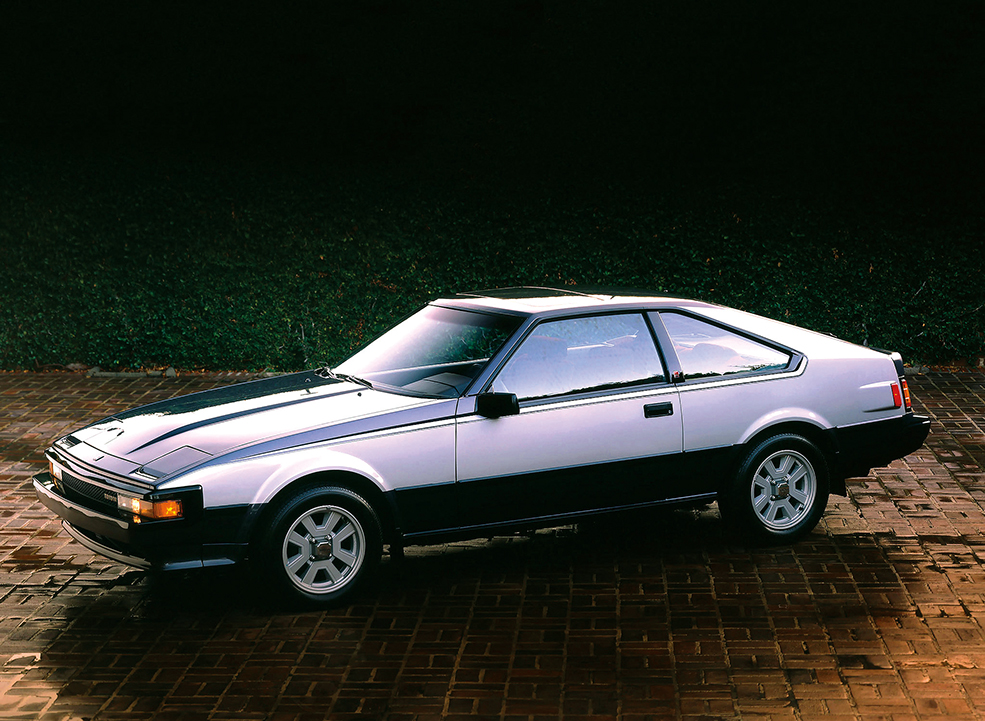
Legendary engine – 1G-GEU/5M-GE
Downsizing to 1,998cc, the A60 brought the SOHC 123bhp 1G-EU engine to the JDM Celica Supra, morphing into the 24V DOHC high performance 158bhp 1G-GEU unit. Export models’ 12-valve 5M-GE engine was shared with the Toyota Cressida, and featured Bosch L-Jetronic-derived fuel injection, developing 145-178bhp.
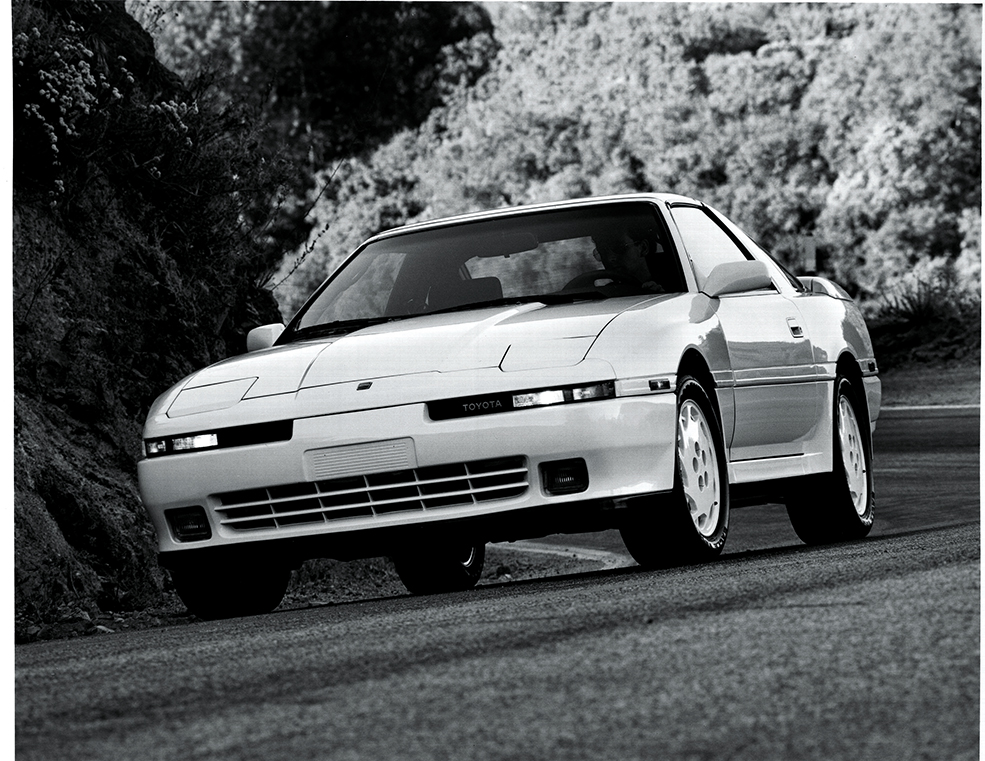
Toyota Supra A70: turbo blows in
The third iteration of the Toyota Supra landed in August 1985, and was notably different from its predecessors, both by the way it looked and in name. Finally splitting from its Celica sibling, all ties were cut from the smaller model, the new car related to the Toyota Soarer coupé. Embracing more aero-efficient style, the curvier, sleeker Supra dropped its Celica badging, but kept its front-engined, rear-wheel drive layout. The A60’s retractable headlights remained, but little else did, the A70 embracing a more low-slung appearance. A quartet of six-cylinder engines were available in the Mk 3 Supra, JDM ‘GA70’ cars available in 2.0-litre 158bhp and 207bhp guises. Power was up to 200bhp in European and US ‘MA70’ models, the inline six-pot now displacing almost 3.0-litres. The car sprinted to 60mph in 8.0 seconds, with more than 80% of its torque available from 1,200rpm. Starting at £15,299 for the manual, the Supra became a headline grabber for the latest Toyota tech; part-aluminium double wishbone suspension was fitted with electronically-controlled ‘Toyota Electronically Modulated Suspension’ (TEMS) systems on some models. ABS was another A70 Supra first.
In the biggest departure yet, and in keeping with the Supra’s new-found GT aspirations, a removable targa top became an option in 1986. Appealing to open-air lovers who wanted to have their hair ruffled, targa-roofed US models gained the exciting ‘Sport Roof’ badge. A rear spoiler was fitted to European-spec cars, limiting options to an automatic gearbox, leather trim and metallic paint. Embracing the 1980s turbocharging movement, a new blown engine pumped power to 232bhp for 1987, even though UK buyers had to wait until January 1989 and part with £22,961 to get their hands on one. With 240lb ft, the 0-60mph dash took just 6.4 seconds, good going for a car which now weighed 1,605kg. Top of the tree turbocharged Supras boasted headlamp washers, a limited slip diff, and TEMS as standard. But Toyota wasn’t done yet.
To homologate the car for Group A domestic and European touring car racing as well as the World Rally Championship, the limited run 270bhp Supra 3.0 GT Turbo-A lifted its skirts and scampered to 60mph in just 5.0 seconds, topping out at 167mph! The fastest Japanese production car of its time, more power arrived with 1991’s 2.5-litre ‘JZ’ engine transplant that liberated 276bhp to take the fight to rivals as diverse as the Honda NSX, ‘FD’ Mazda RX-7 and ‘Z32’ Nissan 300ZX. A special 276bhp 2.5 Twin Turbo R JDM model featured a larger intercooler, lighter anti-roll bars, a Torsen diff, uprated TEIN/Bilstein suspension, as well as a Momo steering wheel and gear knob, and Recaro seats. By the time production ended in 1992, the Supra attracted a high $39,900 price tag in the US, putting it on a par with the Chevrolet Corvette.
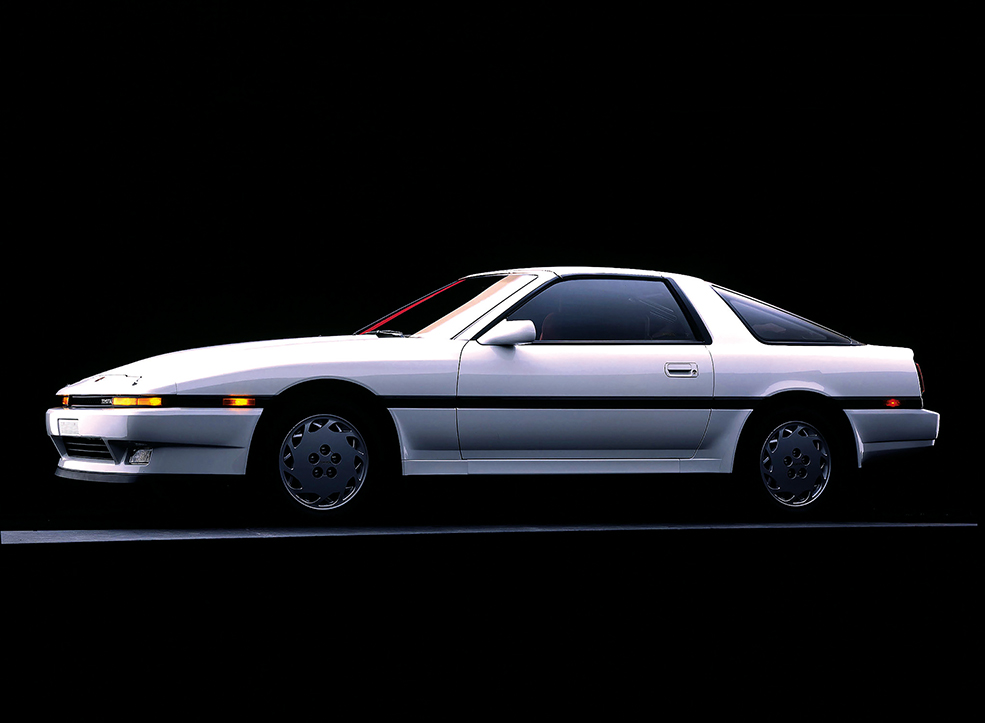
Legendary engine – 1G-GTE
The 24-valve DOHC 1G-GTE engine of the A70 featured a pair of CT-12 turbochargers. The most powerful member of Toyota’s G engine family, output was 207bhp for the twin-turbo Supra. It was replaced by the 2,491cc, 276bhp 1JZ-GTE.
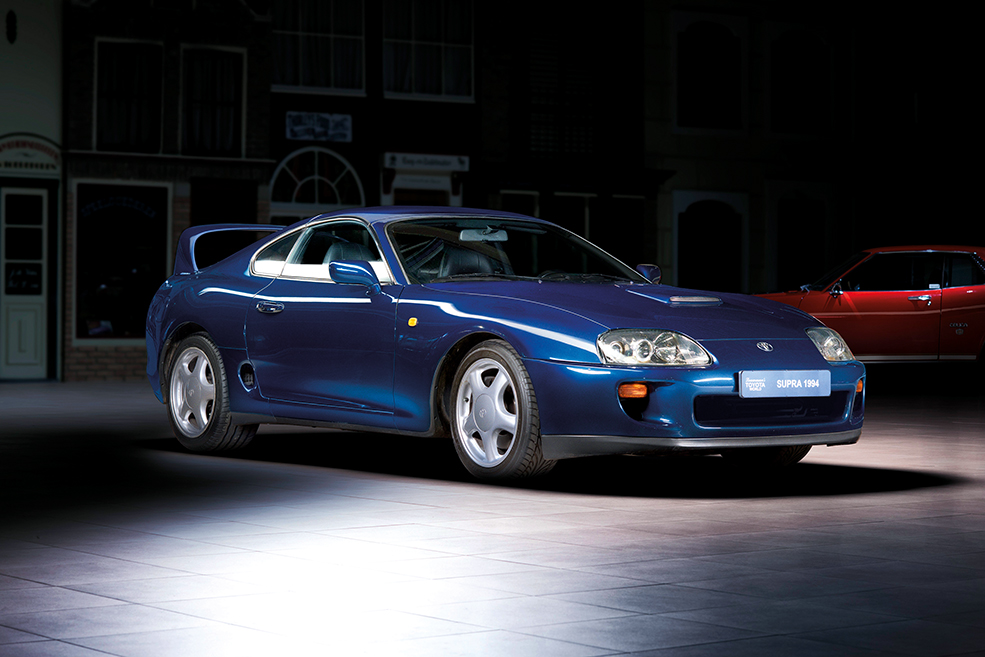
Toyota Supra A80: harder and faster
The covers were pulled off the fourth-generation ‘A80’ Supra at the 1993 Chicago motor show. Development had begun four years before, and yet again, its appearance was a big departure from the generations that had come before. More slippery and curvaceous in shape, a high-rise optional rear spoiler signalled its performance intent. As 1990s safety demands clashed with performance goals, Toyota sharply focused on reducing weight, early A80 Supras tipping the scales at 1,456kg. Where fitted, the rear spoiler was hollow, along with the carpet fibres, the car’s more compact dimensions also contributing to the lighter mass. Additional lightweight components included a magnesium-alloy steering wheel and a plastic fuel tank. Like the A70, a targa top was an option.
Developed under the eye of chief engineer Isao Tsuzuki and again sharing a platform with the Soarer, the A80’s engine line-up was simplified with naturally aspirated 220bhp and turbocharged 326bhp versions of the 3.0-litre ‘JZ’ unit seen in the A70. JDM cars were capped at 280bhp to adhere to Japan’s ‘voluntary’ performance limits, while Toyota’s first six-speed gearbox co-developed with Getrag debuted in the most powerful version of the new car. The only model available in Europe, the proper supercar-baiting performance of the turbocharged Supra saw off competition such as the 3.6-litre Porsche 911 Turbo, a comparison which would have been previously unthinkable. Scorching to 60mph from rest in just 4.6 seconds, the sequential twin turbos ensured that 90% of the peak 325lb ft torque output was available from as low down as 1,300rpm, through to 4,500rpm, giving the car supremely flexible performance. Euro-spec turbo cars could be easily spotted by their bonnet scoops.
More identifiable were the 35 TRD3000GT Supras that wore Toyota Racing Development (TRD) replica body kits of the 1994 JGTC BLITZ Racing Team Supra GT500 racer, that made them 60mm wider at the front than a standard Supra, the rear enlarged by 50mm. Targa tops were the exclusive preserve of the turbocharged car in 1996, while a gentle restyle in 1997 sharpened the looks. The A80 was withdrawn from the UK in 1996, but sales in the US limped on until 1998. Production continued until 2002 for Japan, when the nameplate finally joined its dearly-departed Celica and MR2 relatives. Toyota had built 593,337 Supras across four generations in 24 years, 16,000 of those finding UK homes. A total of 600 A80s made it to these shores.
Make sure you check out our Mk4 Supra buying and tuning guide.
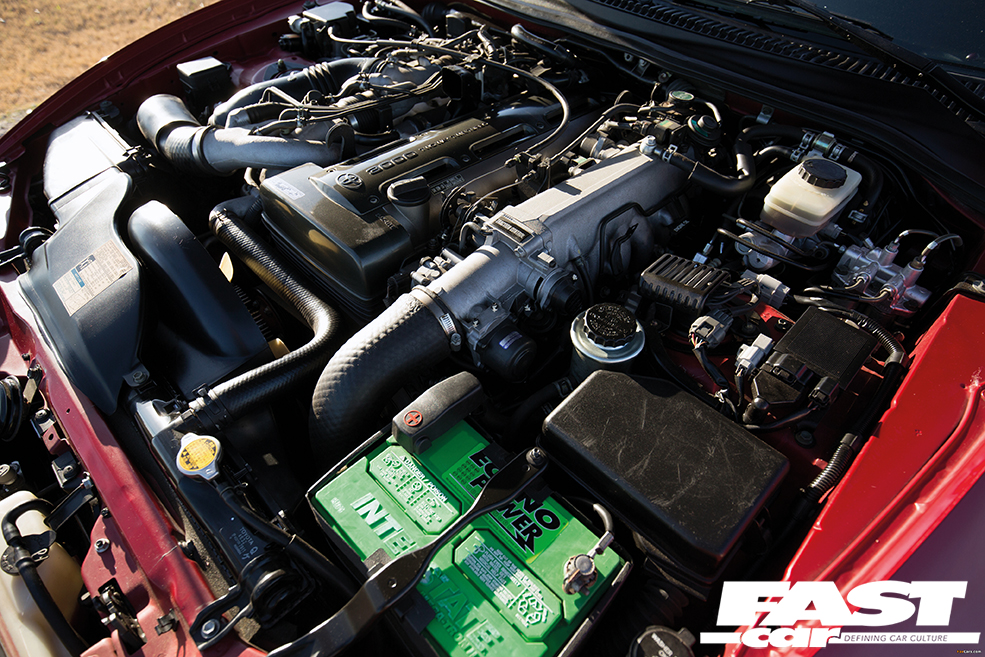
Legendary engine – 2JZ-GTE
The 2JZ-GTE inline-six was produced from 1991-2002, a riposte to Nissan’s RB26DETT engine. Based on the 2,997cc 2JZ-GE, sequential twin turbos and an air-to-air intercooler boosted output to 326bhp in Europe. In 1997, variable valve technology (VVTi) produced 276bhp for JDM cars. The 2JZ-GTE has become a legend in the tuning scene, and rightfully claims a spot in our list of the best engines to tune. Don’t believe us? Check out this 1000bhp Mk4 Supra we featured…
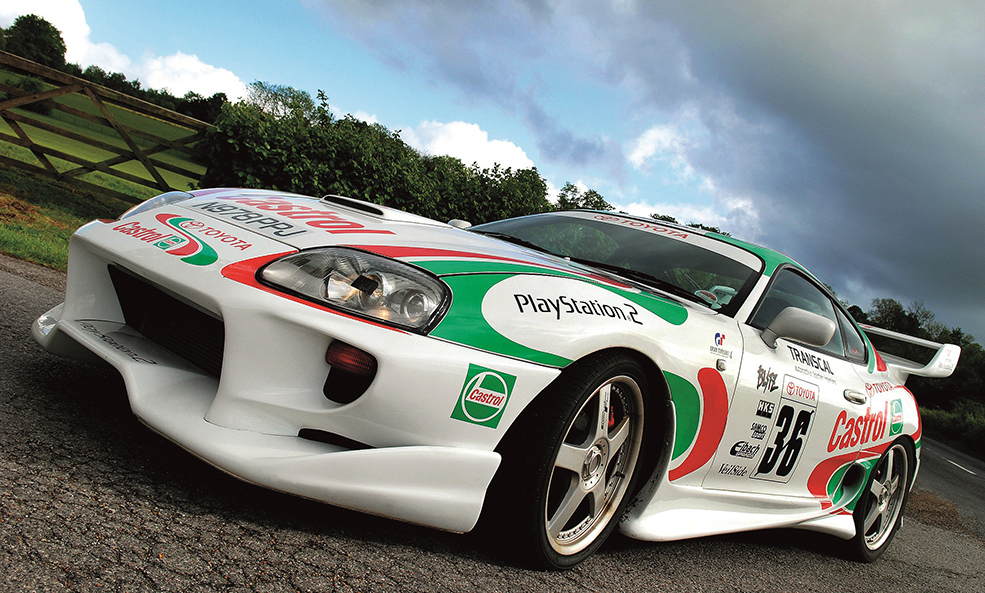
A Gaming Icon
The A80 Supra gained notoriety by way of its appearance in the hugely successful series of Gran Turismo and Need for Speed console driving simulation games. Many a car enthusiast floored the virtual throttle of a TOM’s Castrol-liveried Supra, RZ, or SZ-RA80 on iconic tracks such as Autumn Ring, Deep Forest Raceway or Trial Mountain. Earlier incarnations such as the A70 Supra GT Turbo Limited and Twin Turbo-R have also made appearances. The latest A90 car is also immortalised in the Gran Turismo Sport game, the GR Supra GT Cup running online from April to August 2019, with the final held at the Tokyo Motor Show in October. The Supra also made a name for itself in the world of movies. The first Fast and Furious film of 2001 starred an orange, wing-festooned A80 with 700bhp as the wheels of Brian O’Conner, played by Paul Walker.
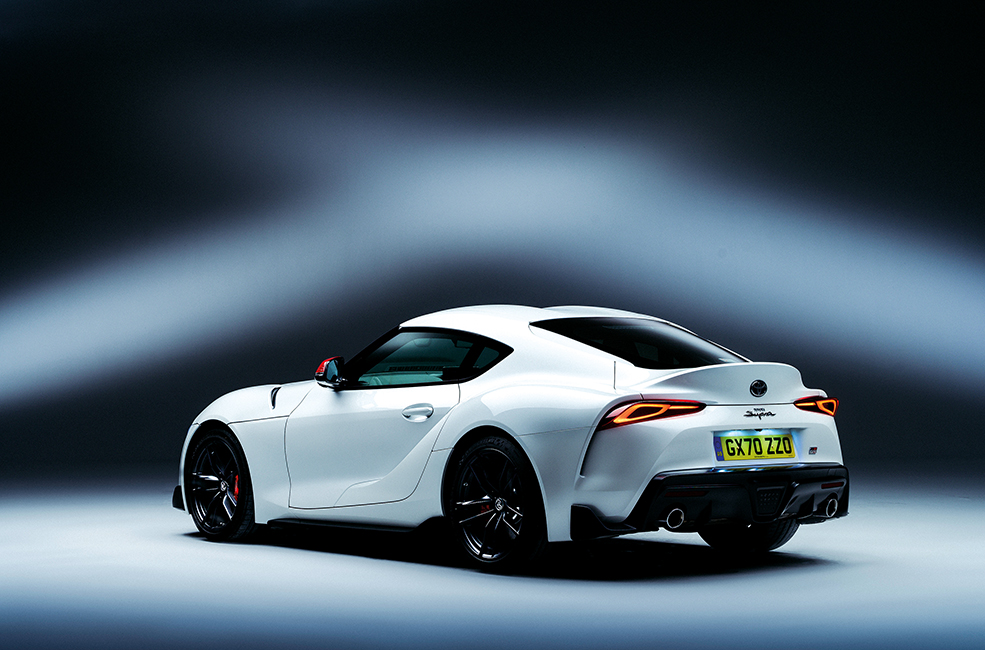
Toyota Supra A90: Supra reborn
Most enthusiasts thought the demise of the A80 was the end of the Supra road, but Toyota’s FT-1 (the imaginarily titled ‘Future Toyota 1’) concept of 2014 seemed to reimagine the idea for the 2010s. Penned by Toyota’s Calty Design Research facility in Newport Beach, California, the North American International Auto Show in Detroit played host to the unveiling of the FT-1. The first car to showcase Toyota’s new ‘Toyota Global Design’ philosophy, the FT-1 was billed as the ‘ultimate world-class sports car’ and ‘a true enthusiast track car in the legendary lineage of the 2000 GT and Supra’. The new concept stirred excitement among Supra fans.
In a move from previous generations, the A90 Supra, like the smaller GT-86, was a jointly engineered product. Sharing components with the BMW Z4, the car was expected to be badged ‘Gazoo’, referencing Toyota’s Gazoo Racing arm. In the final reckoning, GR Supra it was to be, the name first seen on the GR Supra Racing Concept at the 2018 Geneva motor show.
The fifth-generation J29 Supra was unwrapped at the North American International Auto Show in January 2019. Based on BMW’s ‘Cluster Architecture’ (CLAR) platform, and built at Magna Steyr in Graz, Austria rather than Japan, the A90 Supra even borrowed a pair of BMW engines. For the first time, a four-cylinder unit featured in the line-up, the 2.0-litre turbocharged powerhouse available in 194bhp or 255bhp states of tune. True to tradition, a 3.0-litre straight six powered the brawniest A90, its 335bhp coming, again, by way of a turbocharger, another Supra legacy. Front-engined and rear-wheel drive, an eight-speed ZF automatic transmission was the only gearbox option offered. Limited to a top speed of 155mph, the 3.0-litre A90 dispensed with the benchmark 0-62mph dash in 4.3 seconds.
Wearing a sharp suit, which included a stylish ‘double bubble’ roof, chief engineer Tetsuya Tada led development. As its name suggests, Toyota Gazoo Racing was instrumental in refining the new car’s performance, working extensively on the Nürburgring Nordschleife. The most technically advanced Supra yet, UK and European-spec cars featured an active differential. The A90 was the first GR model to be produced by Toyota Gazoo Racing for the global market and the response to it was phenomenal, with all 900 UK and European market allocations taken ahead of the car’s debut in March 2019.
GR Supra 3.0-litre cars came to the UK first, priced at £52,695 for the GR Supra 3.0L, £54,000 for the 3.0L Pro, and £56,495 for the 3.0L A90 Edition. Standard kit included an active differential, adaptive cruise control and suspension, and 19in forged alloy wheels. Now truly reborn for the digital age, LED lighting and an 8.8in infotainment and navigation system with Supra Connect added more tech, Pro-spec cars bolstered by a 12-speaker JBL premium sound system, head-up display, and a wireless smartphone charger. Limited to just 24 cars, the 3.0L A90 Edition was finished in Storm Grey matt paint, and featured matt black alloy wheels and red leather trim.
In the US, Launch Edition cars gave way to the 2021 model year A91 Edition, boosted to 382bhp, its compression ratio lowered from 11:1 to 10.2:1, and fitted with six-port exhaust headers. The GR Supra 2.0 first hit UK shores in January 2021, the 254bhp car sharing the 3.0’s 155mph top speed. Available in 2.0 Pro specification for £45,995, with equipment similar to the 3.0-litre variant, the pricier £47,395 Fuji Speedway Edition was limited to just 45 examples. White metallic paint and red mirror caps ensured it got noticed, as did the red leather and black alcantara trim, a nod to the trademark red and black Toyota Gazoo Racing livery.
The very first A90 production model – complete with a signature from Toyota CEO Akio Toyoda on the dashboard and VIN number 20201 – was auctioned in the US, fetching $2.1m for charity, and while few, if any, Supras are worth that much money, the Toyota’s contribution to the sports coupé enthusiast market over the past five decades has, in many ways, been priceless.
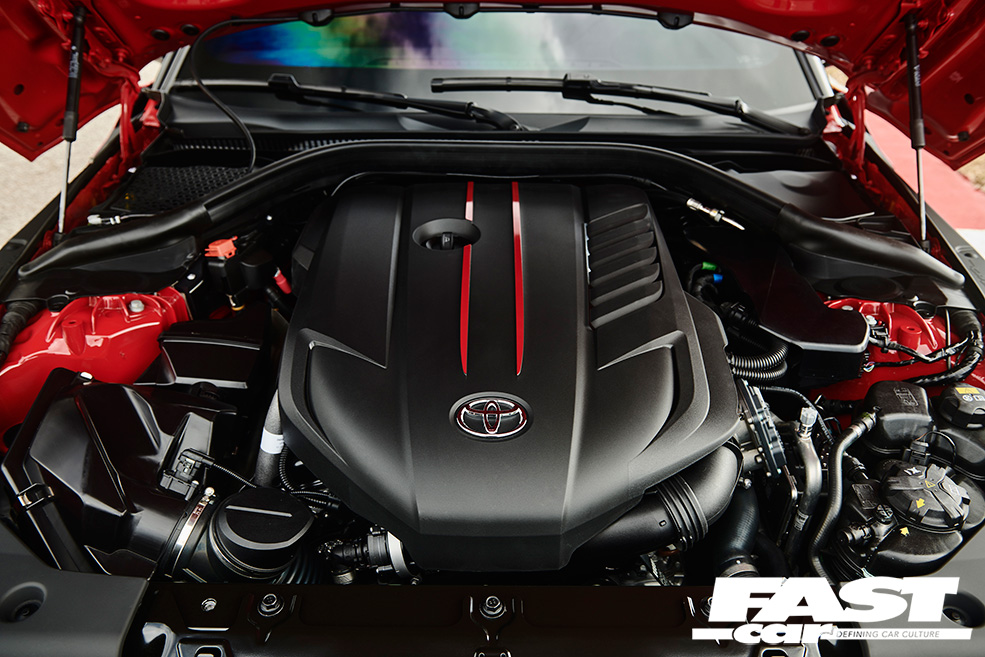
Legendary engine – B58
The A90 shared many parts with the closely-related BMW Z4, including its engines. The 2,998cc, twin-turbocharged, six-cylinder B58 of the range-topping A90 3.0 produces 335bhp, with 369lb ft (500Nm). B58H versions have a higher 382bhp output, but are limited to Far Eastern, US and Canadian markets.
Toyota Supra in motorsport
Racing Supra-macy
The A60 kicked off the Supra’s motorsport career. Success in the British Saloon Car Championship with Win Percy brought a win in 1984, motorcycle racing supremo Barry Sheene taking the car over in 1985. Per Eklund campaigned a Celica Supra in the Ulster Rally and was declared Group A champion in the same year. An A70 Turbo-A prepared by TOM’s won on its debut in the Japanese Touring Car Championship in 1987, but the car didn’t fare well against its established BMW M3, Ford Sierra Cosworth RS500 and Nissan Skyline rivals. Surprisingly, in 1989, the A70 Supra Turbo defended Toyota’s BTCC title.
The A80 upped the Supra’s motorsport anté, the car battling at Le Mans, the Pikes Peak International Hill Climb and mountain races in Switzerland, the US SCCA series, as well as the All-Japan GT Championships from 1995 to 2003. At the 1995 Le Mans, the Supra finished 14th overall, and a modified ex-Supra Super GT car became the first hybrid car to win a motor race – the 500bhp Denso SARD Supra HV-R took victory in the 2007 Tokachi 24-Hour endurance event.
Toyota Gazoo Racing entered an A90 into the 2019 NASCAR Xfinity Series, while a GT4 concept appeared in March the same year. GT4 customer team cars were announced for the 2020 season, developed with Akrapovič, Pirelli and Ravenol. Eligible for continental racing series and the VLN endurance races at the Nurburgring in Europe, the US Michelin Pilot series and the Super Takiyu and Super GT GT500 series in Japan, the GR Supra GT4 contested 84 races and earned 25 class podiums in 2020. It also took 11 class wins and its first Am Cup title in France and looks set for more success in 2021, competing in the British GT Championship, as well as series in Europe and North America championships.
